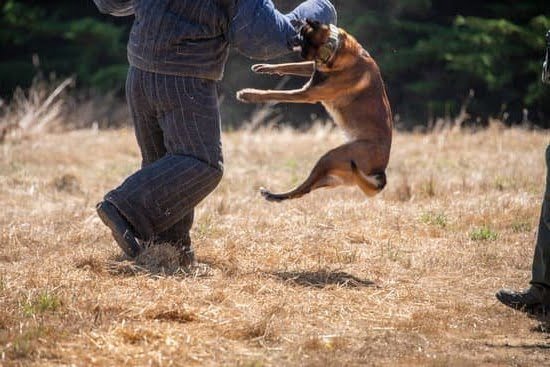Introduction
The Dog Weight Loss Trainer is the perfect solution for pet owners who want to help their furry friends lose excess weight and feel better. By utilizing the latest in canine nutrition science, this trainer encourages dogs to slim down while maintaining their optimal energy and health levels. The specialized diet and exercise plan is tailored to each dog’s lifestyle, providing an effective and safe way to lose weight without compromising their overall wellbeing. With a focus on keeping dogs healthy, happy, and active, this program will ensure that your pooch maintains a healthy body condition for a longer, happier life. Additionally, the specific exercises prescribed in the program assist in building strong muscles and joint flexibility for improved physical capabilities when enjoying outdoor activities like running, hiking, or swimming. Along with providing excellent nutrition advice and detailed fitness plans from certified fitness professionals who have experience with canine physiology and behavior. The Dog Weight Loss Trainer provides everything needed to keep your pet fit without sacrificing quality of life.
Setting Goals
One of the first steps when trying to achieve any type of weight loss goal for a dog should be to set appropriate goals. It is important to note that dogs, just like humans, are unique and individual – so it’s important to consider each animal’s lifestyle and body composition when formulating plans for their health. As you work with your veterinarian to select a safe and realistic weight loss plan, there are several points that you should keep in mind.
Firstly, it’s important to consider the timeline for your goals; weight loss should never be rushed and can take up to several months depending on the size of your dog and the amount of weight they have to lose. If a goal is set that is too aggressive or unrealistic, it can lead to frustration or failure. Your veterinarian will likely suggest breaking down the goals into manageable chunks over time so that progress can be measured.
Additionally, setting specific milestones for yourself and your pet will help keep track of progress and establish accountability between you both; these milestones could include weighing them every couple weeks or performing certain activities that help manage diet/exercise such as shorter walks more frequently or cutting back on treats throughout the day. Being aware of what changes need to occur during each milestone can also give you an idea of how long it will take before reaching the final goal(s). Lastly, offering rewards – either verbal praise or something tangible such as trading their regular high caloric food items with low-calorie alternatives – is essential in motivating your pup throughout the process!
Technology Integration
By incorporating technology into dog weight loss routines, pet owners can easily set up custom-designed diet and exercise plans for their beloved pets. For example, many pet tracking apps offer digital food logs that allow owners to keep track of their pup’s diet and recording all the meals they consume. Additionally, they may offer features such as an activity tracker which can help establish and monitor a regular exercise routine. Moreover, since most apps come with built in reminders, feedings or workouts can be scheduled at suggested times instead of relying on guesswork. This ensures that your pup’s health is properly monitored. Additionally, these applications have been instructed by trained professionals so users are sure to get personalized nutritional advice tailored just for their pooch! And of course, with these convenience features and specialists guidance, owners will be able to maximize the results of the program while keeping it interesting and relevant.
Diet Strategies
A dog weight loss trainer uses a variety of strategies to ensure that a dog can reach their weight loss goals. These strategies involve closely examining the current diet and identifying potential changes that can be made to ensure success. A trainer may advise reducing the amount food being given, or changing the type of food if necessary. In addition, they also may suggest adding in more low-calorie treats, such as carrots and celery, instead of higher calorie treats like cookies and liverwurst. With proper guidance from an experienced trainer, pet owners can begin to make small realistic adjustments to their dog’s diet and gradually achieve the desired results by having their dog become healthier and reach a healthy weight. Furthermore, these experts have extensive knowledge on different nutrition facts which allows them to provide tailored dietary advice based on an individual’s specific needs and lifestyle. They can teach owners how to properly feed their dogs in order to maximize health benefits while avoiding common pitfalls associated with unhealthy diets. Other tips may include teaching responsible portion control as well as monitoring a dog’s environment for any potential diet related triggers that could lead to unwanted eating behaviors.
Exercise Routines
Developing an effective exercise plan for your dog is integral to their weight loss success. It’s important to focus on activities that are safe, fun and rewarding for both you and your pup. Here are some tips to get started:
• Figure out what type of activity suits you and your dog best. Do you enjoy hiking or running? Maybe your pup would prefer a game of fetch or tug-of-war? If you and your pet have different preferences, find a compromise that works for both of you.
• Consider the size and shape of your dog when building a routine. Small dogs might be better suited for short periods of walking or slow jogging, while large breeds can usually handle more vigorous activities like agility courses or playing Frisbee.
• Use toys as an incentive during walks and playtime; make sure to provide plenty of treats throughout each play session so that exercise remains enjoyable rather than monotonous chore. You can also mix up the activities in order to keep things interesting—try introducing a new toy or game every now and then.
• Keep track of duration and intensity levels during each workout session: alternating between low-, medium-intensity sessions allows time for the body to fully recover each week. Additionally, providing ample breaks during physical activity helps ensure that your pooch doesn’t tire out too quickly.
• Incorporate manners into every session—for example, practice commands like “sit”, “stay” or “Heel” as rewards for completing physical tasks; this way, mastering basic commands becomes its own reward! Plus, having a well-trained pup encourages more playtime opportunities with other animals in the future!
Monitoring Progress
A Dog Weight Loss Trainer is a professional who helps pet owners develop an exercise and nutrition plan to help their dogs lose weight. They often work with a team of experts in the veterinary field, including but not limited to, nutritionists and physical therapists, as well as animal behavioral specialists. One of the most important aspects of the trainer’s job is monitoring progress on a regular basis. This can include scheduled check-ins to make sure that the dog’s diet and exercise regimen are helping them shed extra pounds at a healthy pace. During each scheduled check-in, the dog weight loss trainer will evaluate the dog’s body composition and reassess any areas of improvement that need attention such as changes in behavior or adjustment of dietary details. For instance, they may discussion caloric intake requirements, carbohydrate sources, protein sources or other lifestyle habits that may need adjusting; all with an emphasis on helping your pup achieve their ideal weight as safely and quickly as possible. Additionally, setting realistic goals for both the owner and canine is also key so that progress can be seen in a positive way over time.
Maintenance and Prevention
There are several important strategies to ensure long-term weight loss in dogs. One is to incorporate regular exercise into their daily routine. This should include activities that elevate their heart rate, such as running and playing toss with a ball or Frisbee. Swimming is also an excellent form of exercise for a dog, especially one with joint pain.
In addition to incorporating regular exercise, owners should also be sure to feed their dog a healthy diet high in protein and low in empty carbohydrates and fats. Owners should consult with a veterinarian or nutritionist to determine the best food for their specific breed and lifestyle. Proper portion control will help prevent overeating and weight gain over time.
Finally, it’s essential for owners to establish consistent routines for feeding, exercise, and potty breaks. This helps create structure within a household that allows dogs to stay active while also keeping track of meals, snacks, and other forms of nourishment provided throughout the day. With these practices in place, both dog owners and their furry companions will be on the road to achieving long-term weight loss success!
FAQs
Q: What kind of dogs can the Dog Weight Loss Trainer be used for?
A: The Dog Weight Loss Trainer can be used for any type or size of dog. It is designed to help with weight loss and fitness in all breeds and sizes, including small dogs such as Chihuahuas, medium-sized breeds such as Labradors, and large breeds such as mastiffs. It is important to check with your vet that your pet is healthy enough to participate in the program before starting.
Q: How long will it take my dog to reach a healthy weight?
A: Every dog is different so it is hard to say how quickly they may reach a healthy weight after implementing the Dog Weight Loss Trainer program. Some factors that affect progress include food intake, exercise level, age, breed size and health condition. However, you should start to see changes in your dog’s weight within two or three weeks if proper nutrition and exercise are followed.
Conclusion
The use of the Dog Weight Loss Trainer can be highly beneficial for dog health and wellness. Achieving and maintaining an optimal weight for a canine is important for overall physical health and mental wellbeing. Additionally, using the Dog Weight Loss Trainer can help to prevent or slow down weight-related conditions, such as arthritis, heart disease, breathing issues, and diabetes. Incorporating this device into a pet’s lifestyle can also promote better behavior since excess weight often can lead to lethargy or other issues related to low activity levels. Lastly, using the Dog Weight Loss Trainer will facilitate easier walks, hikes, or recreational activities due to increased energy levels after weight loss is achieved. Employing this instrument in combination with an appropriate diet and exercise plan can have tremendous positive effects on a canine’s long-term health.

Welcome to the blog! I am a professional dog trainer and have been working with dogs for many years. In this blog, I will be discussing various topics related to dog training, including tips, tricks, and advice. I hope you find this information helpful and informative. Thanks for reading!





